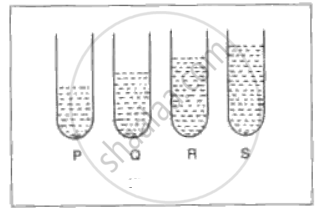Advertisements
Advertisements
प्रश्न
Distinguish between the free (or natural) and forced vibrations.
उत्तर
| Natural Vibration | Forced Vibration | |
| i. | An object's natural vibrations are its inherent vibrations, which occur at a consistent amplitude and frequency. |
Forced vibrations are those that occur as a result of being subjected to a periodic external force. |
| ii. | The amplitude changes with time. | Amplitude doesn't change throughout time. |
| iii. | The body's intrinsic frequency causes it to vibrate. | Does not move at its own natural frequency, but instead learns to deduce its own. |
APPEARS IN
संबंधित प्रश्न
Name the phenomenon involved in tunning a radio set to a particular station
Define the Resonance phenomenon?
In the diagram below, A, B, C, D are four pendulums suspended from the same elastic string PQ. The length of A and C are equal to each other while the length of pendulum B is smaller than that of D. Pendulum A is set into a mode of vibrations

1) Name the type of vibrations taking place in pendulums B and D?
2) What is the state of pendulum C?
3) State the reason for the type of vibrations in pendulum B and C.
Why is a loud sound heard at resonance?
How do you tune your radio set to a particular station ? Name the phenomenon involved in doing so and define it.
In fig. , P, Q, R and S represent test tubes each of height 20 cm which are filled with water upto heights of 10 cm, 14 cm, 16 cm and 18 cm respectively. If a vibrating tuning fork is placed over the mouth of test tube Q, a loud sound is heard.
(i) Describe the observations with the tubes P, R and S.
(ii) Give the reason for your observation in each case.
(iii) State the principle illustrated by the above experiment.

Give two examples of forced vibrations.
State two ways in which resonance differs from forced vibrations.
What are the factors that affect the frequency of a vibrating string and how do they affect the frequency?
Explain free and forced vibrations. Give an experimental arrangement to illustrate the phenomenon of resonance.
